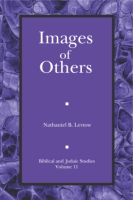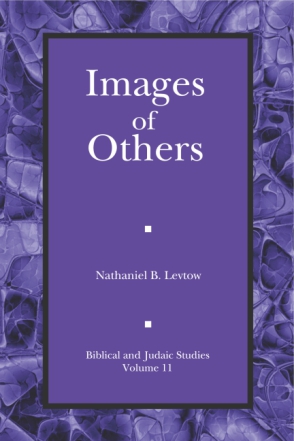Images of Others
Iconic Politics in Ancient Israel
Nathaniel Levtow
In this volume, Nathaniel Levtow articulately interacts with Mesopotamian and Israelite iconoclastic traditions, locating Israelite polemics against cult images among a spectrum of ancient West Asian literary genres and ritual practices that target the embodied deities of political opponents. Levtow argues that Israelite parodies of Mesopotamian iconic cult were not unique expressions of aniconic monotheism but assertions of Israelite political potency during and shortly after the Babylonian Exile. By interpreting Israelite icon parodies in this context, Levtow rejects the idea of “idolatry” as a static, native Israelite descriptive category and highlights the ability of Israelite writers to compose authoritative classifications of cult that profoundly influenced ancient and modern understandings of iconic worship practices. He concludes that biblical representations of iconic cult reveal dynamic acts of Israelite social formation and exemplify the enduring power of the cult image in ancient West Asian societies.
- Description
- Table of Contents
Acknowledgments
Abbreviations
General
Reference Works
Introduction
Interpretive Traditions:
Idolatry, Dualism, Monotheism, Aniconism
Redescribing Israelite Parodies of Iconic Cult
1. Rites and Writing in Ancient Israel
Ritual and Power
Classification
Social Formation
2. Israelite Icon Parodies
An Innovative Genre of the Exilic Age
Jeremiah 10:1–16
The Icon Parodies of Second Isaiah
Psalms 115 and 135
Literary History, Social History, and Interpretive Power
Classification and Social Formation
3. Mesopotamian Iconic Ritual
The Mesopotamian Cult Image: Ancient Evidence and Modern Interpretations
The Induction of the Cult Image in Mesopotamia: The Mis Pî Ritual
Iconic Aspects of Mesopotamian
Warfare and Historiography
The Enthronement of the Supreme Deity
Mesopotamian Iconic Politics and Israelite Icon Parodies
4. Iconic Politics in Ancient Israel
Iconic Traditions in the Hebrew Bible
The Ark Narrative
Deuteronomistic Iconic Political Discourse
Ezekiel and the Departure of Yahweh
Israelite Aniconism or Israelite Iconic Politics?
Conclusion
Classification and Cult
Bibliography
Indexes
Index of Authors
Index of Scripture
Index of Other Ancient Sources
Index of Topics
Mailing List
Subscribe to our mailing list and be notified about new titles, journals and catalogs.




